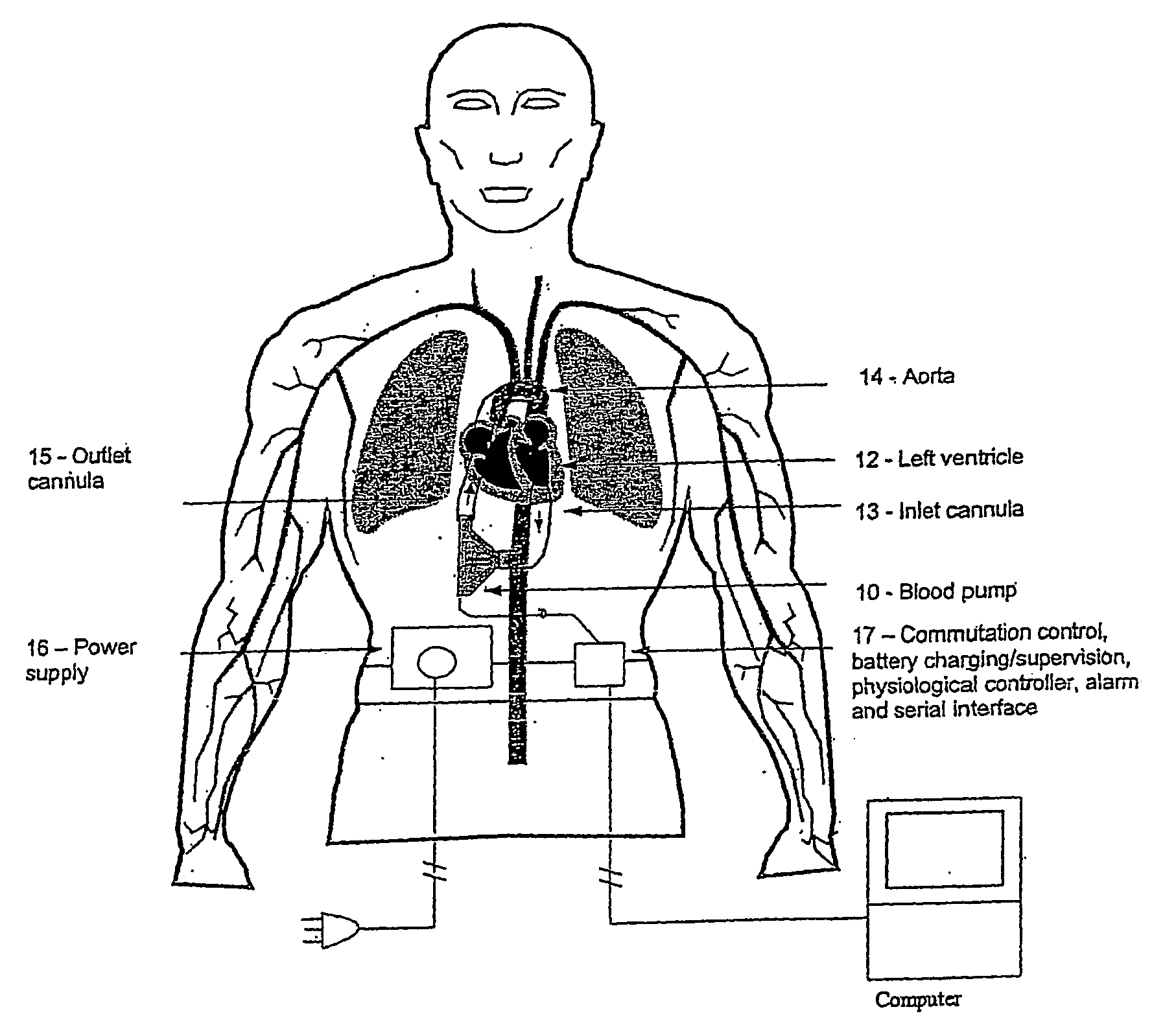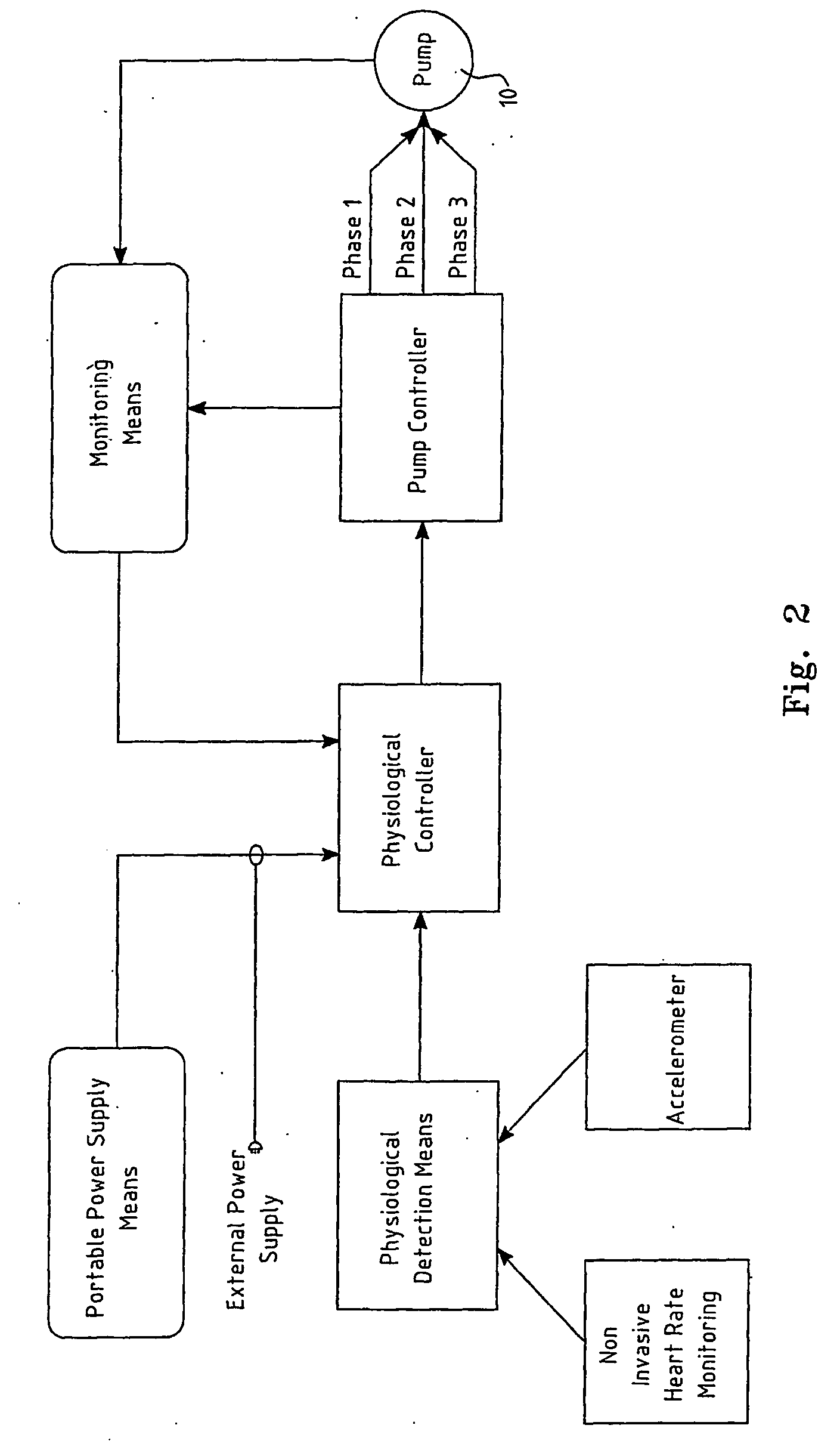Physiological demand responsive control system
a control system and physiological demand technology, applied in the field of physiological control systems in mammals, can solve the problems of complex control systems which the body itself uses to control various organs, and speed bears no relation to actual speed
- Summary
- Abstract
- Description
- Claims
- Application Information
AI Technical Summary
Benefits of technology
Problems solved by technology
Method used
Image
Examples
first embodiment
[0073] With initial reference to FIGS. 1-4 a first preferred embodiment of a control algorithm and control system is described below and by way of example.
[0074] In this embodiment the aim is to provide a pump controller which utilises a control algorithm which takes as its two primary inputs for decision making firstly an indication of the degree of movement of body 11 per unit time as a coarse measure of exertion and hence pumping load required of the heart and particularly left ventricle 12 and secondly an indication of heart rate derived, in this instance, non-invasively by monitoring of electrical parameters driving pump 10.
[0075] The system described with reference to FIGS. 1-4 exhibits the following characteristics: [0076] 1. Allowing motor speed to vary and deriving control information from those time varying signals; and [0077] 2. Concept of using control of power input or speed to the motor / pump.
[0078] The block diagram shown in FIG. 2 shows the signals that are derived...
second embodiment
[0082] With reference to FIGS. 5 to 7 inclusive there will now be described a control system in accordance with a second preferred embodiment:
[0083] In relation to this second embodiment the control strategy is similar to that described with respect to the first embodiment but, in addition, includes as a further control input derived from non-invasively determined parameters the “pumping state” of pump 10. This feature provides a safety-override mechanism as illustrated in the flowchart of FIG. 7 thereby to ensure that the basic control strategy described with reference to the first embodiment is less likely to put the patient at risk. Initially in the description which follows invasively derived parameters are discussed showing how the various pumping states have been defined and come to be identified. A method of non-invasively deriving the same parameters and pumping state determinations is then described with both forms of derivation being summarised in table 1.
[0084] With ref...
PUM
 Login to View More
Login to View More Abstract
Description
Claims
Application Information
 Login to View More
Login to View More - Generate Ideas
- Intellectual Property
- Life Sciences
- Materials
- Tech Scout
- Unparalleled Data Quality
- Higher Quality Content
- 60% Fewer Hallucinations
Browse by: Latest US Patents, China's latest patents, Technical Efficacy Thesaurus, Application Domain, Technology Topic, Popular Technical Reports.
© 2025 PatSnap. All rights reserved.Legal|Privacy policy|Modern Slavery Act Transparency Statement|Sitemap|About US| Contact US: help@patsnap.com



